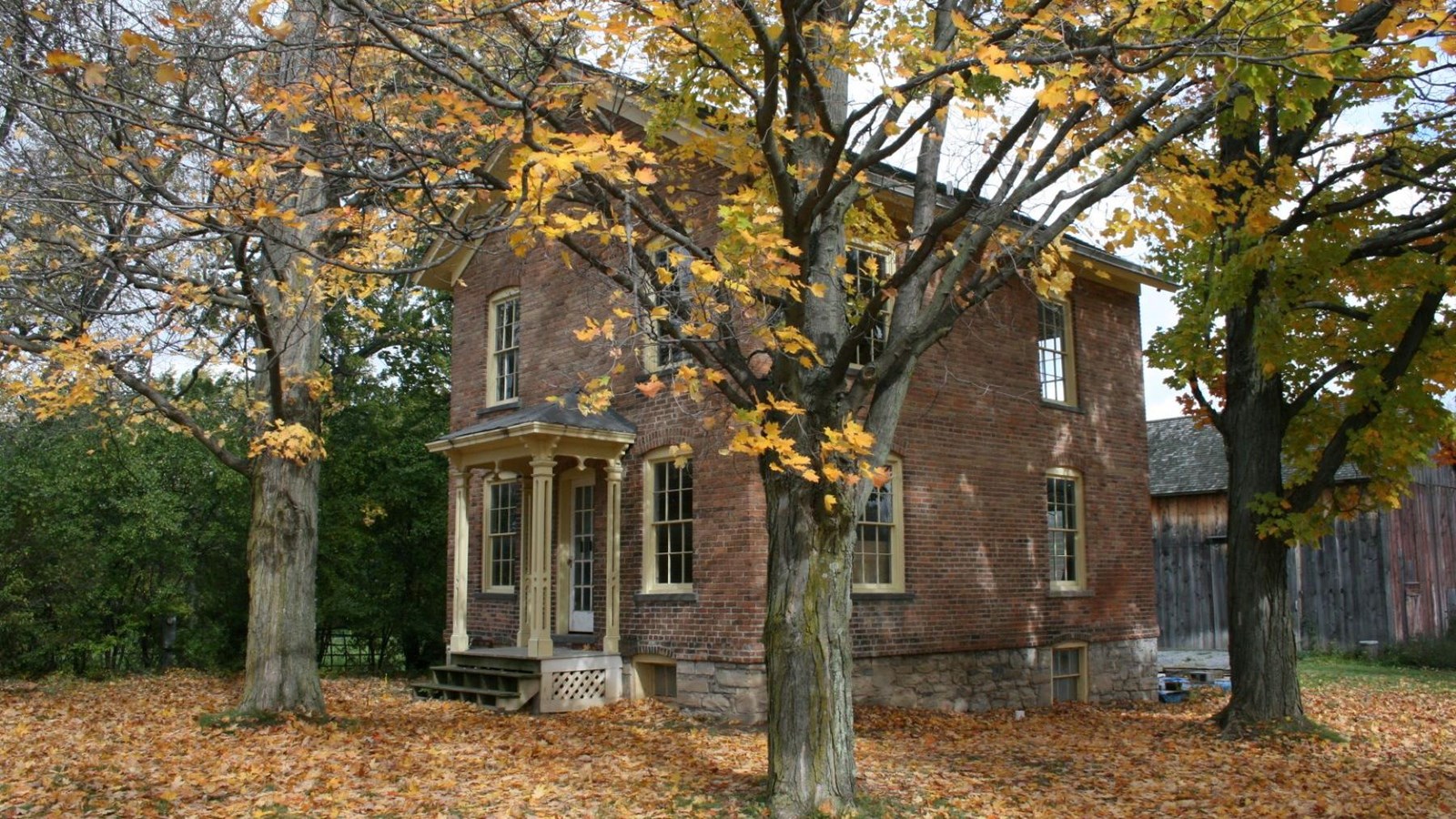Last updated: February 15, 2024
Place
Harriet Tubman Home

NPS Photo
First Aid Kit Available, Gifts/Souvenirs/Books, Historical/Interpretive Information/Exhibits, Information, Information - Maps Available, Information - Ranger/Staff Member Present, Information Kiosk/Bulletin Board, Parking - Auto, Parking - Bus/RV, Picnic Table, Restroom, Restroom - Seasonal, Scenic View/Photo Spot, Trash/Litter Receptacles, Water - Drinking/Potable
For the decade following her escape to freedom, Harriet Tubman devoted her energy to helping her friends and family attain their own emancipation. As the most famous conductor on the Underground Railroad, she was almost constantly on the move between Canada and Maryland. In that time, she rarely had an opportunity to establish a home base for herself. Realizing that a Civil War was imminent, Tubman found a haven for her family in the pastoral village of Fleming, New York, just outside the city of Auburn.
Harriet Tubman purchased a 7-acre farm on South Street in the late winter or early spring of 1859 from Frances Seward, an active member of the Women’s Suffrage movement and an abolitionist. In this home, Tubman’s parents, brothers, nieces, and nephews would be protected by her powerful abolitionist friends during the coming conflict. Here, they could build a life among the familiar rhythms of the seasons and connect with other families from the eastern shore of Maryland in the free black community of “New Guinea.”
Harriet Tubman purchased the farm for $1,200, with $25 down. At the time of purchase, the farm included a wood-frame farmhouse on a fieldstone foundation, measuring 22 by 28 feet, facing the plank road and probably with a gable front. A barn would have been at the rear. These buildings could have dated back to 1840, or may have been built after 1853. On February 10, 1880, an accidental fire destroyed Tubman’s wood-frame house.
Constructed between 1881 and 1882, the new brick house we see today was erected on a foundation of cut Onondaga limestone laid upon the subsurface rubble stone footing of the old house. At a full two stories with an attic, the new house was probably larger than the old one, with about 1,200 square feet on two finished floors. The house was entirely designed and built by African Americans—most likely Tubman’s second husband, Nelson Davis, and Tubman’s relatives and friends.
Auburn, NY was a hub for abolitionists in the mid-1800s and had ties to Philadelphia, PA where Harriet Tubman lived immediately after she escaped from slavery in Maryland. While in Philadelphia, Harriet met Lucretia Coffin Mott, an influential Quaker abolitionist. Lucretia’s sister, Martha Coffin Wright, lived in Auburn, NY in the 1850s and would become friends and colleagues with Harriet Tubman. Martha’s husband David was in a law practice with William Seward. Seward’s wife, Frances Miller Seward, Harriet, and Martha all worked to provide support for freedom seekers on the Underground Railroad in Auburn, NY.
After her work on the Underground Railroad, Harriet Tubman used these connections to wealthy and powerful white abolitionists to finally secure a place where she could have her own home and determine the course of her life in freedom.
When Harriet Tubman purchased her 7-acre parcel from Frances Seward in 1859, the transfer of land to a self-emancipated person was illegal under the Fugitive Slave Act. Frances Seward was breaking the law and taking a large risk to help Harriet Tubman have her own land. Frances (correctly) thought that since her husband, William Seward, was a powerful politician in New York State that no action would be taken against them.
Harriet Tubman lived in Auburn, New York from 1859 until her passing in 1913. She lived on the South Street property, adding new buildings for her family to live in as well as starting the Harriet Tubman Home for the Aged and Infirm Negros so that there would be a place of refuge for the elderly, sick, and homeless she knew.
Harriet Tubman continued her devotion to supporting others by opening her home on the farm to let people stay, specifically those people who had suffered the most under slavery and war. Harriet Tubman welcomed many people into her home, including orphans, people who were disabled, and anyone too old to work and support themselves. Harriet Tubman continued to operate the farm, producing thousands of pounds of pork, hundreds of pounds of butter and enough food grown to feed the growing number of people that Harriet Tubman continued to love and support.
To memorialize and ensure sustainability of her work, Harriet Tubman wanted to see her home established as an incorporated organization that would continue in her name. On December 3rd, 1895, the certificate of incorporation was signed, and the “Harriet Tubman Home” was founded to “Establish and maintain a home or retreat for the shelter, care and maintenance of worthy indigent colored people.” Her legacy would continue and grow even after her death in 1913.
